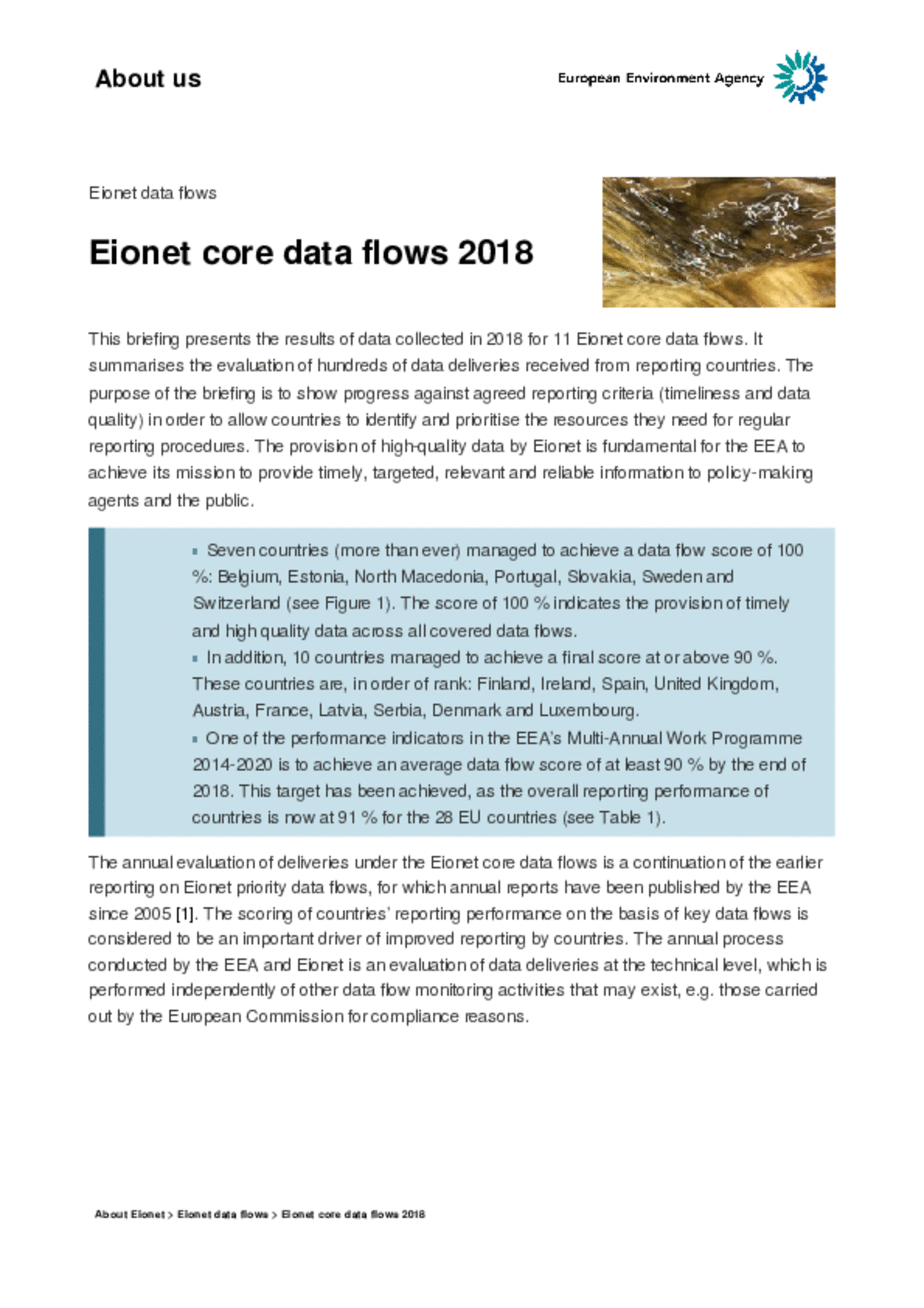All official European Union website addresses are in the europa.eu domain.
See all EU institutions and bodiesBriefing 3/2019
This briefing presents the results of data collected in 2018 for 11 Eionet core data flows. It summarises the evaluation of hundreds of data deliveries received from reporting countries. The purpose of the briefing is to show progress against agreed reporting criteria (timeliness and data quality) in order to allow countries to identify and prioritise the resources they need for regular reporting procedures. The provision of high-quality data by Eionet is fundamental for the EEA to achieve its mission to provide timely, targeted, relevant and reliable information to policy-making agents and the public.
ISBN: 978-92-9480-081-7

